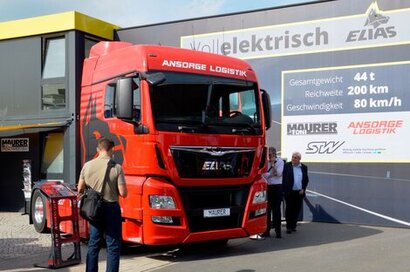
By 2030, Europe should have around 300,000 to 400,000 zero-emission trucks on the road, according to the targets set out in the Regulation on CO2 Emission Standards for Heavy-Duty Vehicles (HDVs). However, currently, Europe is nowhere close to that target.
In 2023, electric trucks accounted for only 1.5 percent of the market, while electric bus sales increased to 14 percent of the market. Therefore, electric HDVs will need to increase substantially to meet the 2030 target, and Europe needs to create the enabling conditions for the expected market uptake. For the electricity sector, this means that distribution grids will have to become an enabler and not a bottleneck for the deployment of HDV charging infrastructure, especially given its greater power needs than that of traditional cars and vans.
The policy recommendations are as follows:
Accelerate grid anticipatory investments and permitting to allow DSOs to make investments based on projected HDV charging demands.
Fast-track charging infrastructure rollout for heavy-duty vehicles, whose charging cycles mostly happen during overnight depot, but also en-route at truck stops in the case of long-haul. The framework should guarantee that the needed energy can be provided when and where required, with flexibility options such as smart charging based on the drivers’ schedule.
Develop harmonised grid hosting capacity maps to give the right investment signals to electric vehicles buyers and/or installers of charging infrastructure.
Implement a fair remuneration framework for DSOs, as it is essential for attracting private investment in grid infrastructure. Current cost benchmarks are outdated, and DSOs shouldn’t bear excessive risk from uncertain demand. The weighted average cost of capital (WACC) should reflect today’s economic conditions and investment needs.
Address supply chain bottlenecks for materials such as transformers, copper, aluminium, cables and electrical steel and reduce lead times for grid components.
Promoting interoperable data exchange among market players to ensure grid planning and charging infrastructure development reflect the needs of HDV charging.
Introduce prioritisation criteria for DSOs to better manage connection requests. This could be facilitated by classifying charging infrastructure for HDVs as “critical infrastructure” under the upcoming European Clean Transport Corridor Initiative.
For additional information:

